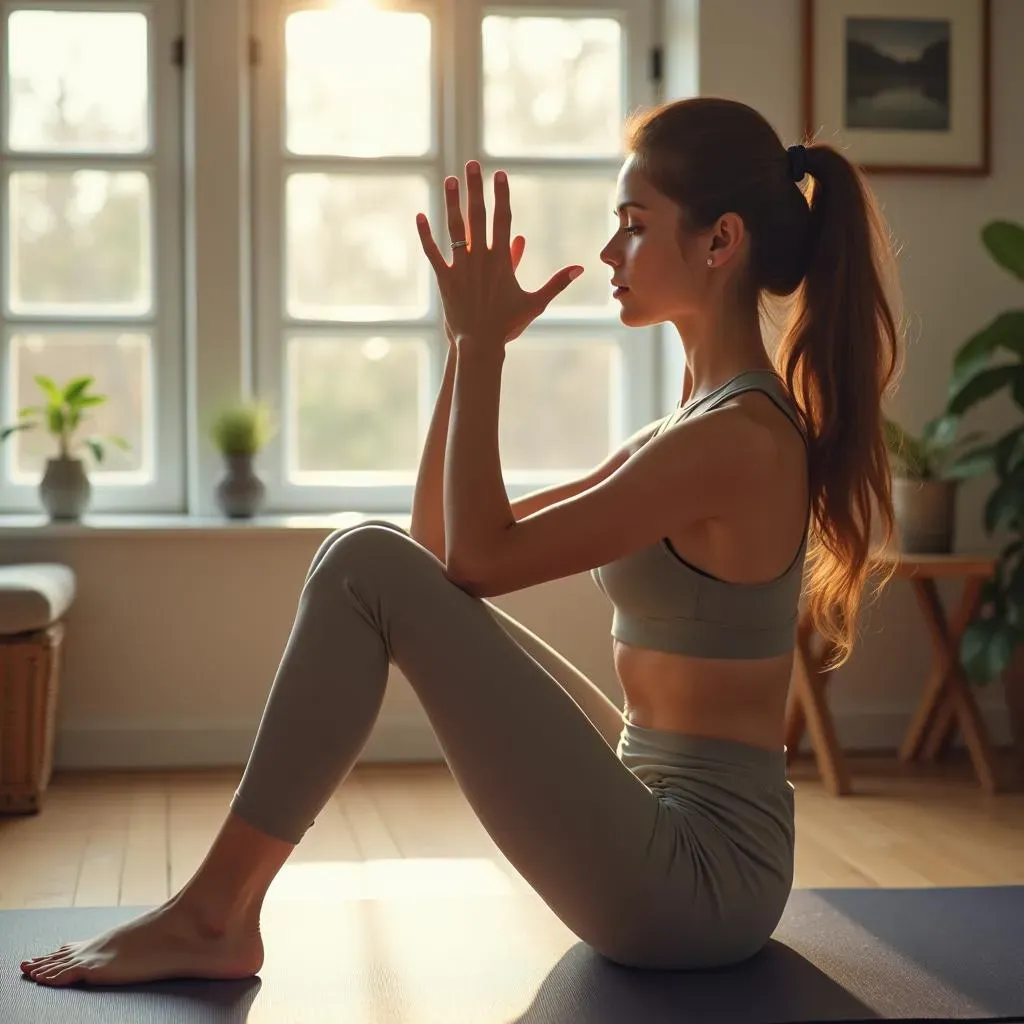Table of Contents
Thinking about trying Pilates but don't know where to start? Maybe you're short on time or just prefer the comfort of your own space. You're not alone. Getting into a new fitness routine can feel daunting, especially when fancy studios and equipment seem necessary. But what if you could get started right now, in your living room? That's where a beginner at home pilates workout comes in. It's accessible, effective, and surprisingly simple to integrate into your day.
What Exactly is a Beginner At Home Pilates Workout?
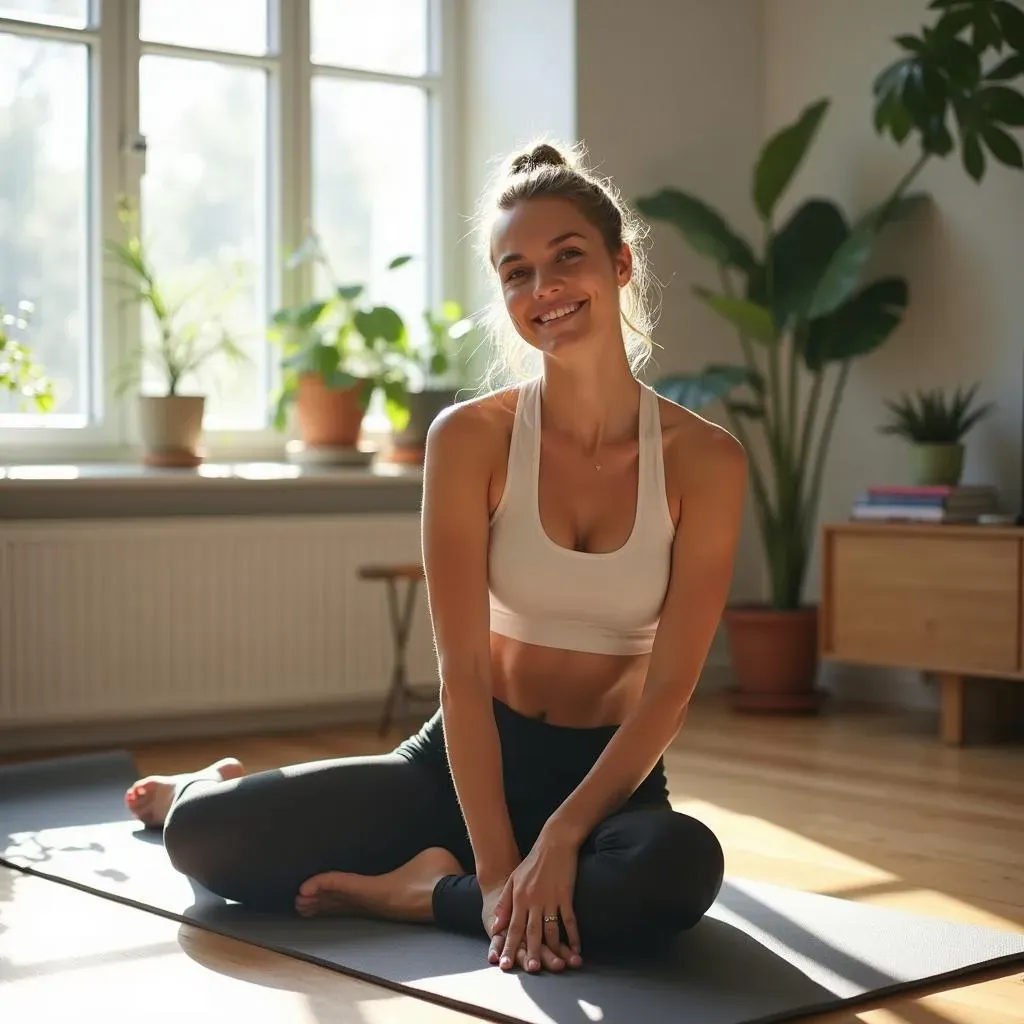
What Exactly is a Beginner At Home Pilates Workout?
Breaking Down the Basics
Alright, let's get straight to it. A beginner at home pilates workout is exactly what it sounds like: starting your Pilates practice from the comfort of your own house. Forget the fancy reformer machines or the intimidating studio atmosphere, at least for now. This is about getting down on a mat – or even just the floor – and learning the fundamental movements Joseph Pilates developed. It focuses heavily on core strength, flexibility, posture, and mindful movement.
Think of it as building a strong foundation. You're not attempting acrobatic feats on day one. Instead, you're learning to connect with your body, understand basic alignment, and activate those deep abdominal muscles that support everything you do. It's controlled, precise movement, not about speed or reps. It's about quality over quantity, every single time.
Why Choose At-Home Pilates?
So, why bother with a beginner at home pilates workout specifically? Life gets busy, right? Getting to a gym or studio might feel like another chore. Practicing at home removes that barrier. You can roll out your mat whenever you have a spare 20-30 minutes – before work, during a lunch break, or after the kids are in bed. It fits into *your* schedule, not the other way around.
Plus, it's cost-effective. No membership fees, no special gear needed beyond maybe a mat. You can find tons of reputable, free resources online to guide you. It’s a low-pressure way to explore if Pilates is for you without a significant investment. It's just you, your body, and the space you have.
- Flexibility in scheduling
- Significantly lower cost
- Comfort of familiar surroundings
- Ability to go at your own pace
What It's Not (and Why That's Good)
A beginner at home pilates workout isn't about pushing yourself to exhaustion or competing with anyone. It's not a high-impact cardio session, though you might break a sweat as you engage muscles you didn't know you had. It's also not about needing perfect form from day one. Everyone starts somewhere, and the beauty of doing it at home is you can mess up, adjust, and learn without feeling self-conscious.
You don't need to understand complex anatomical terms or have a background in dance or gymnastics. The best approach is curiosity and a willingness to try. It's about listening to your body and gradually improving your control and awareness over time. It's a journey, not a sprint, and starting at home makes those first steps feel a lot less intimidating.
Setting Up Your Space for a Beginner At Home Pilates Workout
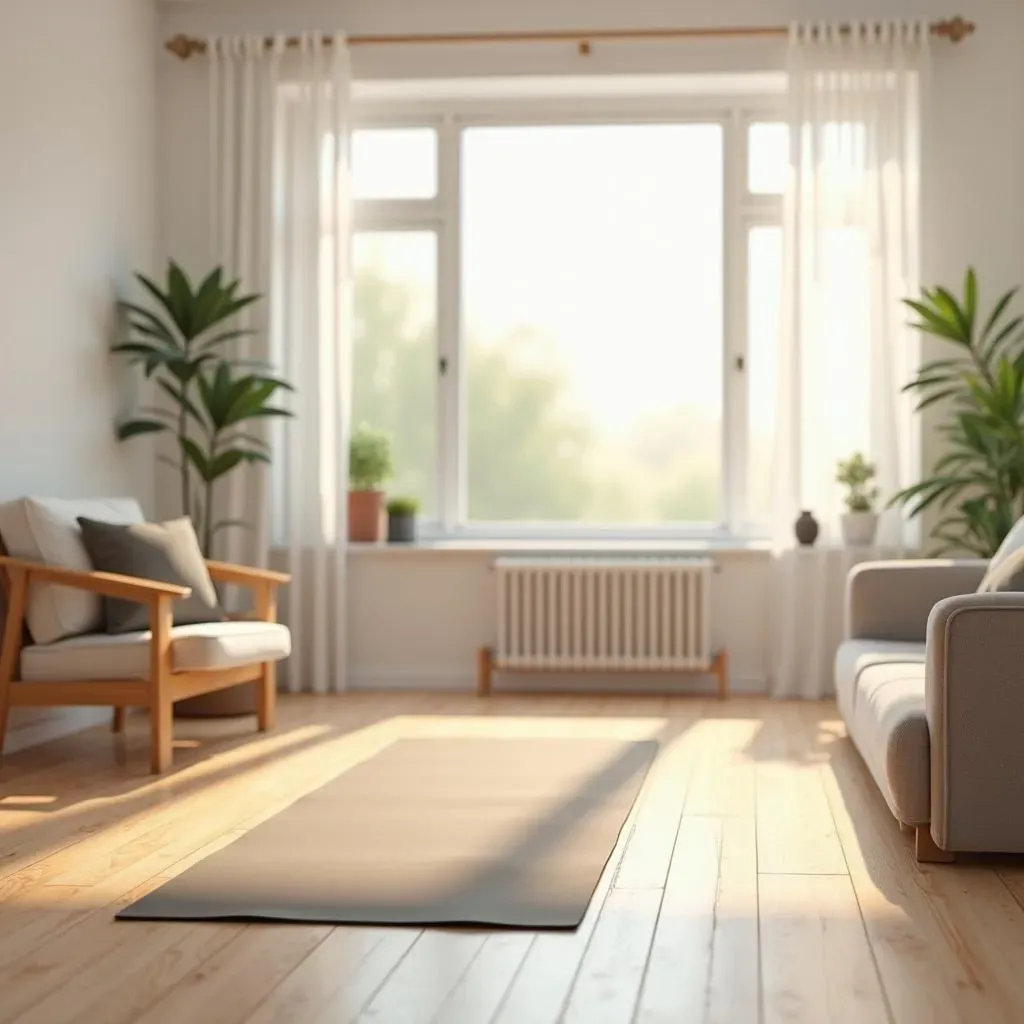
Setting Up Your Space for a Beginner At Home Pilates Workout
Creating Your Pilates Zone
So, you're ready to give this whole beginner at home pilates workout thing a shot? Awesome! The first hurdle, if you can even call it that, is sorting out where you'll actually *do* it. You don't need a dedicated studio or fancy equipment. Seriously. Find a spot in your house where you have enough room to lie down flat and extend your arms and legs without hitting the furniture. A living room floor, a quiet corner in a bedroom, even a clear space in the kitchen if you're feeling adventurous (maybe not during dinner prep). Just make sure the floor isn't too hard – concrete isn't ideal for your spine – or too soft like a thick shag carpet that makes balancing tricky. A little space, a relatively flat surface, and you're pretty much good to go.
- Clear enough space to lie down and stretch
- Choose a surface that isn't too hard or too soft
- Minimize distractions (turn off the TV!)
- Good lighting helps with visibility
Key Moves for Your Beginner At Home Pilates Workout
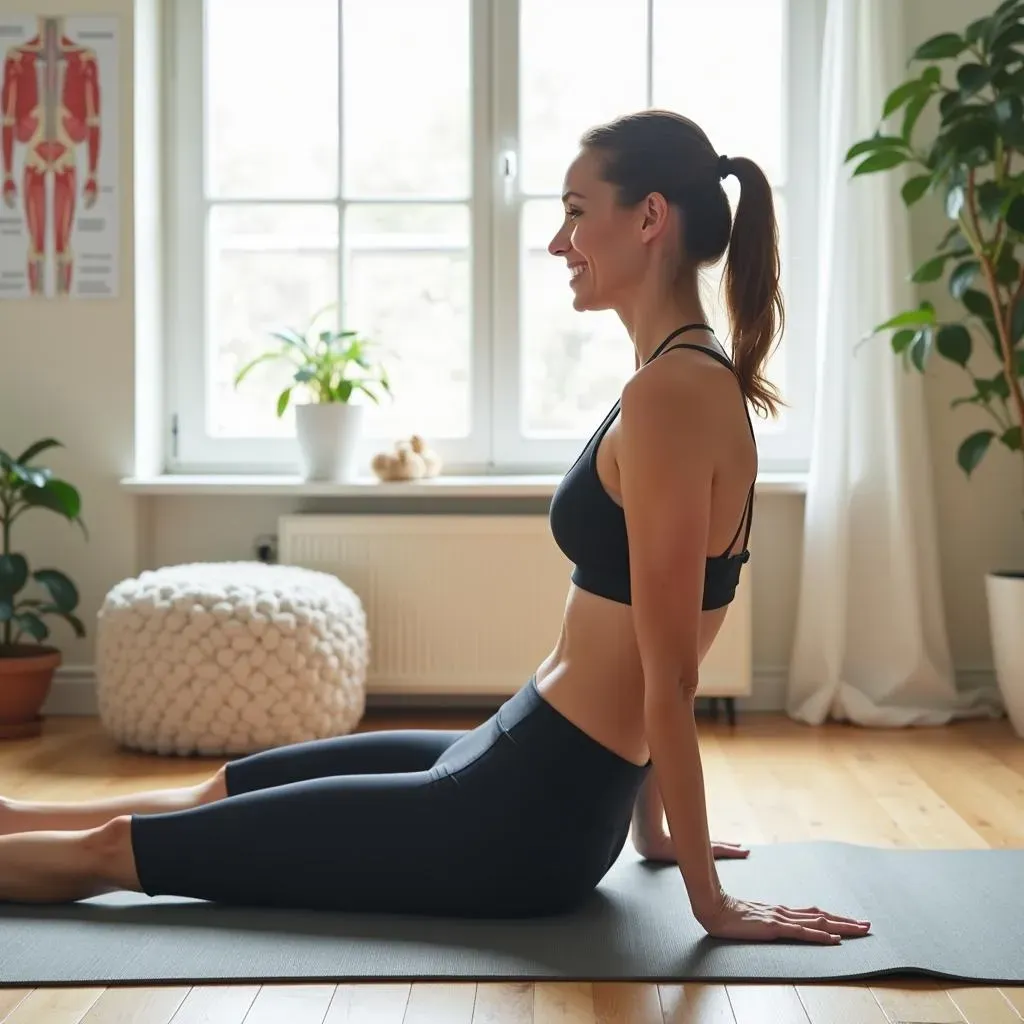
Key Moves for Your Beginner At Home Pilates Workout
Starting with the Hundred (Modified, Obviously)
let's talk about actually *doing* this beginner at home pilates workout thing. You've got your space sorted, maybe a mat rolled out. Now what? You don't need to know all 500-plus exercises Joseph Pilates dreamed up. Start with the absolute basics. The Hundred is famous, or infamous depending on who you ask. For beginners, it's usually modified. Lie on your back, knees bent, feet flat on the floor. Lift your head and shoulders slightly off the mat, looking towards your knees. Arms are long by your sides, palms down. Now, pump your arms up and down in small, controlled movements as you inhale for five counts and exhale for five counts. Repeat this for 10 cycles. It sounds easy. It often isn't, but it teaches you core connection and breath control right away.
Another go-to is the Pelvic Curl, sometimes called a Glute Bridge. Still on your back, knees bent, feet flat. Engage your glutes and abs, then peel your spine off the mat one vertebra at a time until you're in a bridge shape. Hold for a second, then slowly roll back down, articulating through your spine. This one feels good and wakes up your back and backside, crucial for better posture which Pilates is all about.
Focusing on Core Connection and Control
More important than knowing a million moves when you start your beginner at home pilates workout is understanding how to engage your core. Pilates isn't just about crunching your abs. It's about that deep, internal support system – your transverse abdominis, pelvic floor, and multifidus. Think about drawing your belly button towards your spine, but without holding your breath or sucking in so hard you can't move. It's a gentle but firm engagement, like you're bracing for a light tap to the stomach.
Breathing is tied directly to this. Pilates uses specific breathing patterns, often inhaling to prepare for a movement and exhaling during the effort. This helps activate those deep core muscles and keeps oxygen flowing. Don't overthink it initially, but pay attention to your breath. It's your internal rhythm section for the workout.
Here are a couple of fundamental moves to practice core connection:
- Tabletop Position: Lie on your back, lift your legs so knees are bent at 90 degrees, shins parallel to the floor. Maintain a neutral spine (small gap under your lower back) by engaging your core. Hold this. It's harder than it looks if you're doing it right.
- Leg Slides: From the same position (or feet flat on the floor), slowly slide one heel away from you, extending the leg, while keeping your core stable and lower back from arching. Slide it back in. Alternate legs. It's about control, not speed.
Building Blocks: Single Leg Circles and Roll-Ups
Once you feel a bit more confident with the basics, you can introduce moves like Single Leg Circles. Still on your back, extend one leg towards the ceiling (doesn't have to be perfectly straight). Keep your hips stable using your core, and draw small circles with the extended leg, first one direction, then the other. The key is keeping your pelvis anchored. If your hips are rocking all over the place, make the circles smaller or bend the knee slightly.
The Roll-Up is another classic, though it can be challenging for beginners. Lie flat on your back, legs extended. Inhale to prepare, then exhale as you slowly roll up, peeling your spine off the mat one vertebra at a time, reaching towards your feet. Inhale at the top, then exhale as you slowly roll back down. If you struggle, bend your knees, or use your hands behind your thighs for assistance. It's a fantastic way to improve spinal mobility and core strength in your beginner at home pilates workout.
Avoiding Common Pitfalls in a Beginner At Home Pilates Workout
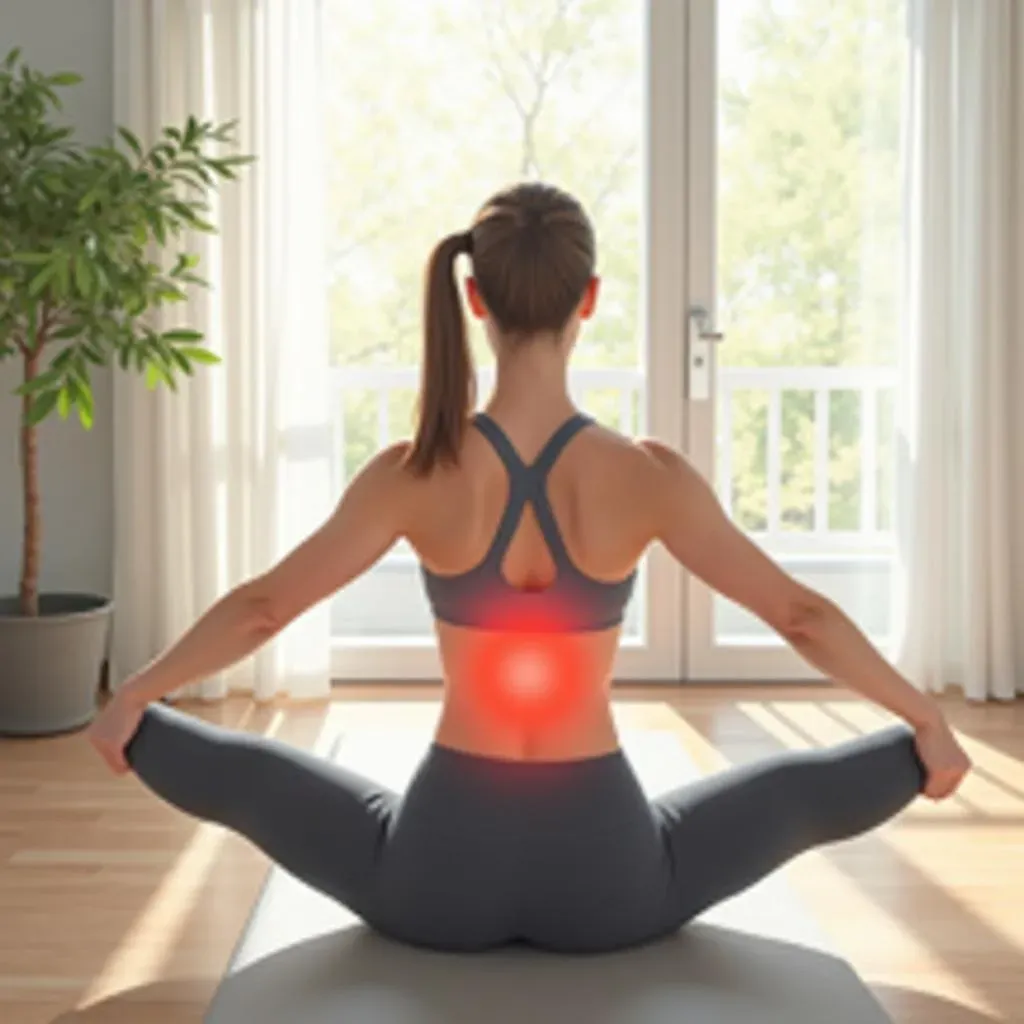
Avoiding Common Pitfalls in a Beginner At Home Pilates Workout
Don't Rush Through the Moves
One of the easiest traps to fall into when you're doing a beginner at home pilates workout is speed. You might see videos where people flow quickly from one exercise to the next. That's not what you're aiming for right now. Pilates is about control and precision, not speed. Rushing means you're probably using momentum instead of muscle, especially your core. This not only makes the exercise less effective but also increases your risk of tweaking something. Think slow, deliberate movements, focusing on engaging the correct muscles.
It feels counterintuitive sometimes, especially if you're used to faster-paced workouts. But slowing down allows you to really feel what's happening in your body. Are you engaging your abs? Is your back staying stable? Can you control the movement through its entire range? Taking your time helps build that mind-body connection that's central to Pilates.
Ignoring What Your Body Tells You
Another big one is pushing through actual pain. There's a difference between feeling your muscles work and feeling a sharp or uncomfortable sensation in your joints or back. If something hurts, stop. Seriously. A beginner at home pilates workout should challenge you, but it shouldn't cause pain. Modifications exist for almost every exercise. Maybe you don't lift your leg as high, or you keep your knees bent instead of straight. It's okay to adjust.
Listen to your body. It's giving you feedback. If a move feels wrong, check your form against a reliable source (like a reputable online video) or try a simpler version. Consistency is more important than doing the hardest possible version of an exercise and injuring yourself. You're building a habit, not training for the Olympics tomorrow.
- Focus on control over speed.
- Engage your core deliberately in each movement.
- Stop if you feel sharp pain, not just muscle fatigue.
- Look for modifications if an exercise feels wrong or too difficult.
- Don't compare your progress to others; it's your journey.
Consistency is Key: Sticking with Your Beginner At Home Pilates Workout
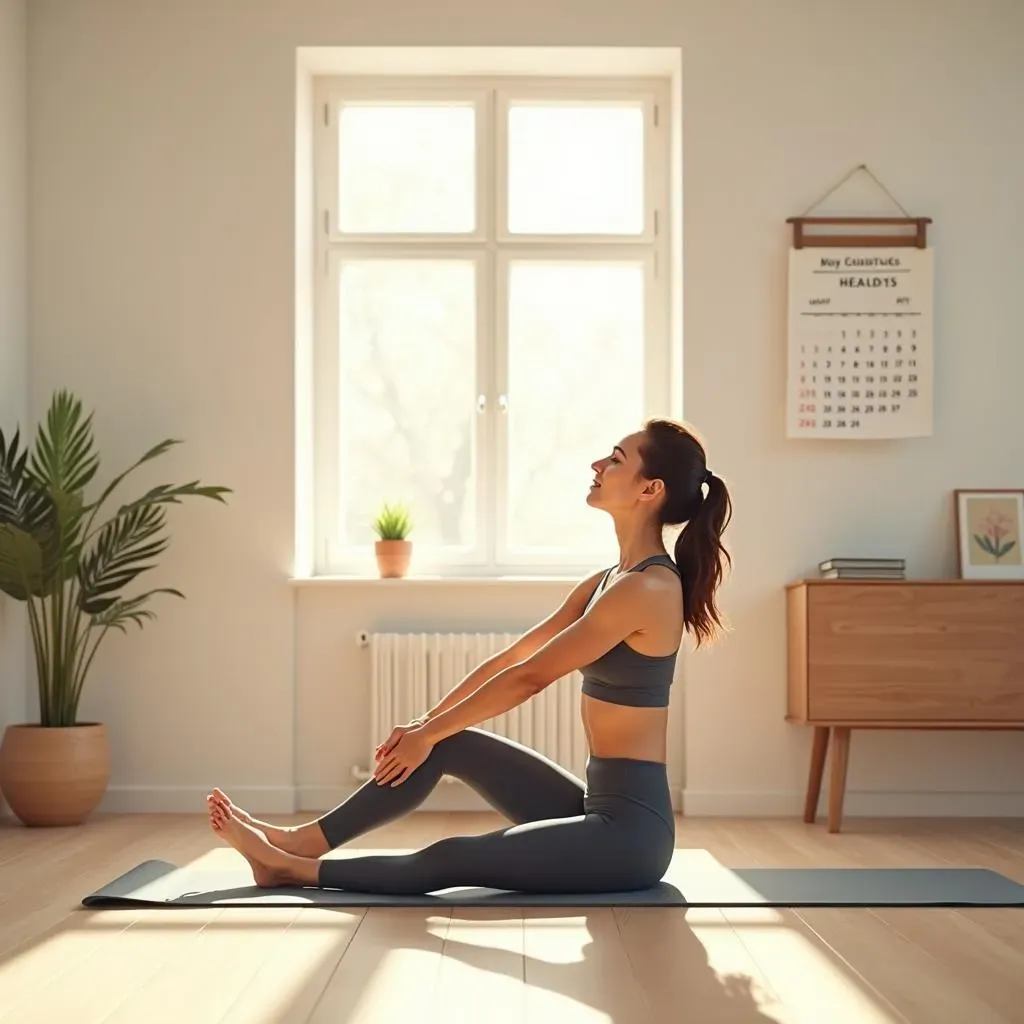
Consistency is Key: Sticking with Your Beginner At Home Pilates Workout
Making It a Habit
Starting a beginner at home pilates workout is great, but sticking with it? That's where the real magic happens. It's easy to feel motivated for the first week or two, then life gets in the way. Consistency isn't about doing an hour every single day; it's about showing up regularly, even if it's just for 15-20 minutes. Those small, consistent efforts build strength, improve flexibility, and create a habit that's much harder to break than trying to do too much too soon. Think of it like watering a plant – a little bit often is better than drowning it once and forgetting about it.
- Schedule it like any other appointment.
- Start small (15-20 minutes is plenty).
- Find an online instructor or program you enjoy.
- Keep your mat rolled out as a visual reminder.
- Track your progress, even small wins.
Ready to Roll Out Your Mat?
So, there you have it. Diving into a beginner at home pilates workout isn't some mystical practice reserved for the bendy elite. It's just about getting on the floor and moving your body with some intention. You don't need a dedicated studio or a reformer that costs more than your car. Just a bit of space and a willingness to try. Sticking with it, even just a few times a week, can genuinely make you feel stronger and move a bit easier. It's not a magic bullet, but it's a solid step towards feeling better in your own skin, right where you are.
